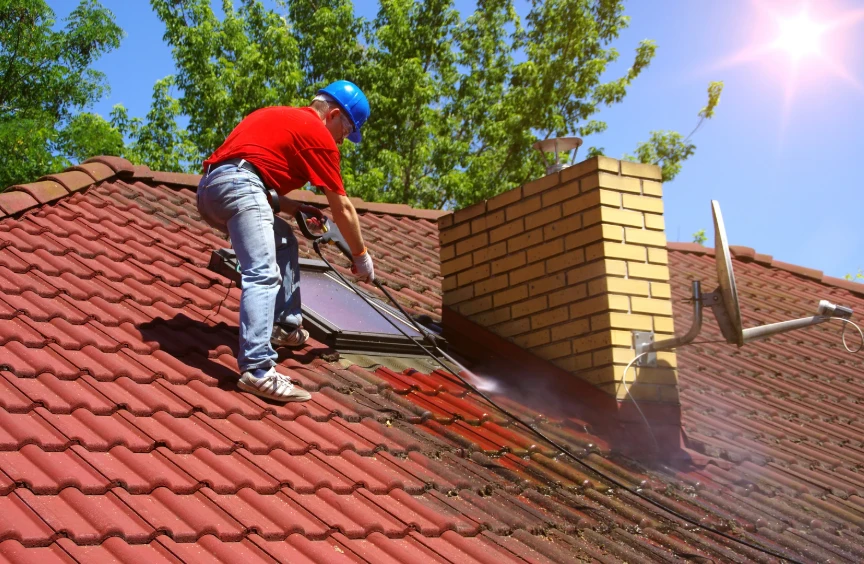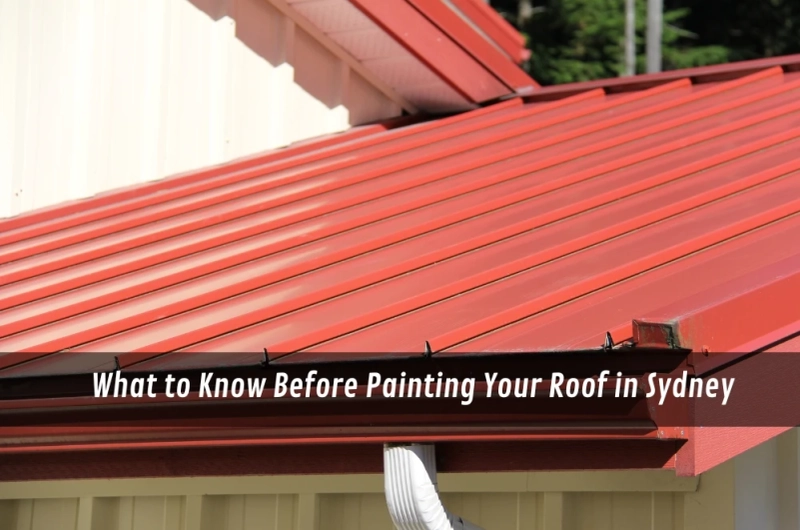If you've owned a home in Sydney for any decent stretch of time, you’ll know the roof isn't just a lid on your house—it’s your first line of defence. Harsh sun, salty winds, tree debris, sudden downpours… it all adds up over the years. And that wear doesn’t stay hidden for long, especially once the original coating starts to fade or peel.
Plenty of people put it off. I did, too—until stains showed up under the eaves. From the ground, the roof looked fine. Up close, it was another story. That’s when I started looking into roof painting services, not for appearances, but because I needed to restore some real protection overhead.
Here in Sydney, the elements don’t wait. Roofs take a hammering, and when the top layer starts giving way, problems travel down fast. So if you’re thinking about doing something about it, you’re probably already on the right track.
Why roof painting isn't just cosmetic
Here’s the thing: people often wait until they see damage. But by then, paint has usually already failed at the microscopic level. Water gets in, UV takes its toll, and one hairline crack becomes ten. That’s why roof painting isn't just about freshening up the house—it’s damage control and, in some cases, damage prevention.
A decent roof paint does more than seal things up. It reflects heat, protects against corrosion, and helps tile roofs stay watertight through changing weather. Especially in older homes, it gives the entire structure a boost in resilience.
Bullet points? Sure, because this stuff matters:
- Protection from ongoing sun and storm exposure
- Helps prevent moss, mould, and deterioration
- Shields against rust on metal sheets
- Slows down weathering on cement tiles
- Keeps water from soaking into porous surfaces
I’ve seen neighbours wait too long and regret it. One guy had a few tiles pop during a hot spell. Turned out moisture had weakened the underlayers. The whole section had to be patched. It could’ve been avoided with a proper coat two years earlier.
How preparation shapes the final result
No point in painting over problems. That’s something a few cheap operators forget. And it’s where a lot of roof painting jobs fall apart—literally. Because without prep, paint doesn’t stick. It lifts. It bubbles. And it leaves your roof looking worse than before.
So, what’s involved in proper prep?
- Pressure washing the roof to strip off grime and flaky paint
- Treating any signs of moss or mould before sealing
- Replacing broken or loose tiles or rusty sheet sections
- Applying primer or sealant, depending on the surface material
Every surface reacts differently. You can’t treat tile like tin. I once had a painter explain how porous concrete absorbs differently depending on age, slope, and even previous coatings. That's when it clicked—good painters aren't just painters. They're part diagnostician, part technician.
Roof painting isn’t the same as house painting. The surface moves heats, cools, and takes a hammering from weather. If you don’t start with solid prep, it won’t last.
Some of this links to broader practices in home repair and upkeep advice across established Australian housing resources—especially those focused on long-term resilience. Not everyone thinks about that upfront, but the right advice can steer decisions the right way from the get-go.

Common pitfalls when hiring a roof painter
Let’s be blunt. The roof painting industry has its fair share of cowboys—people who show up with a pressure washer and a few cans but none of the technical knowledge. And the problem is that it can take months before their bad work becomes obvious.
I know of two people in my circle who got stung. One had the paint start peeling before the next summer hit. The other found out after a building inspection that most of the ridge tiles hadn’t been sealed at all.
Here are a few warning signs to stay clear of:
- The painter rushes the quote or avoids inspections
- No proof of trade license or public liability insurance
- Prep is glossed over—literally
- Paint brands are unknown, or “we use what we’ve got”
- No clear timeframes or surface prep plan
Anyone offering same-day jobs or rock-bottom quotes probably isn’t giving you what your roof needs.
You’ll also see more subtle things—like contractors avoiding detailed questions. That’s something I spotted after reading more about mistakes when choosing roof painters, where common traps are spelled out by people who’ve dealt with the aftermath. If someone’s cagey or vague, take it as a red flag.
The benefit of modern paint technology
Roof coatings used to be pretty basic—just a layer to keep the sun off. Now? They're more like performance gear. Formulated to flex, resist UV degradation, and stand up to rainstorms, they give roofs a much better shot at lasting through our wild weather swings.
Some upgrades worth noting:
- Heat-reflective coatings that lower internal roof temperatures
- UV-stabilised formulas to prevent fading and chalking
- Acrylic membranes with added flexibility to reduce cracking
- Elastomeric blends that stretch with roof movement
I had one of the newer solar-reflective coats done two years back, and while I was sceptical at first, it made a clear difference. The upstairs rooms didn’t heat up nearly as fast during hot spells. It wasn’t a huge shift—but it was enough to notice.
That said, paint only works if applied correctly. The best coating on the market won’t fix a badly prepped roof. That’s why solutions focused on durable roof coating solutions tend to emphasise both product and process equally. You need both in sync.
Final thoughts
Getting your roof painted might not be the flashiest home upgrade, but it’s one of the most practical. Especially in a place like Sydney, where roofs don’t just age—they wear down fast. And once that outer layer starts to break, it doesn’t take long for issues to multiply underneath.
The roof protects everything beneath it. And while paint might seem like a surface treatment, it’s also a kind of insurance—if it’s done right.
A careful, professional job isn’t about making things look better. It’s about giving the materials that they need to hold up against time, weather, and everything else this city throws their way.


